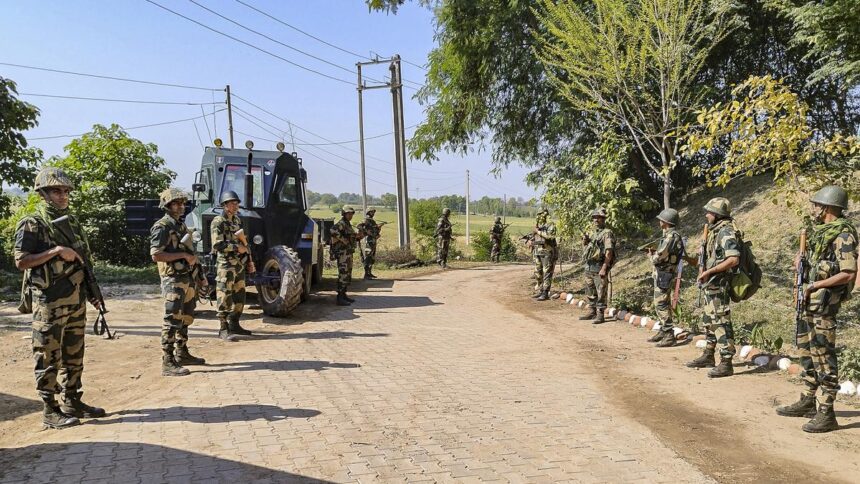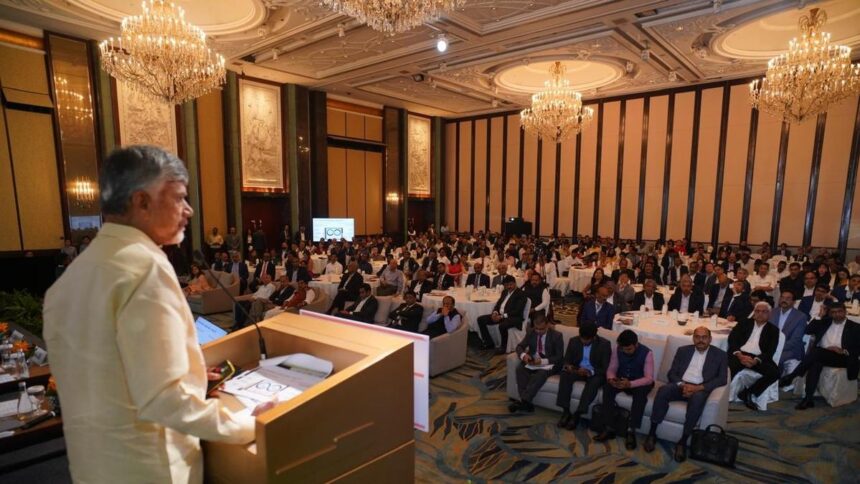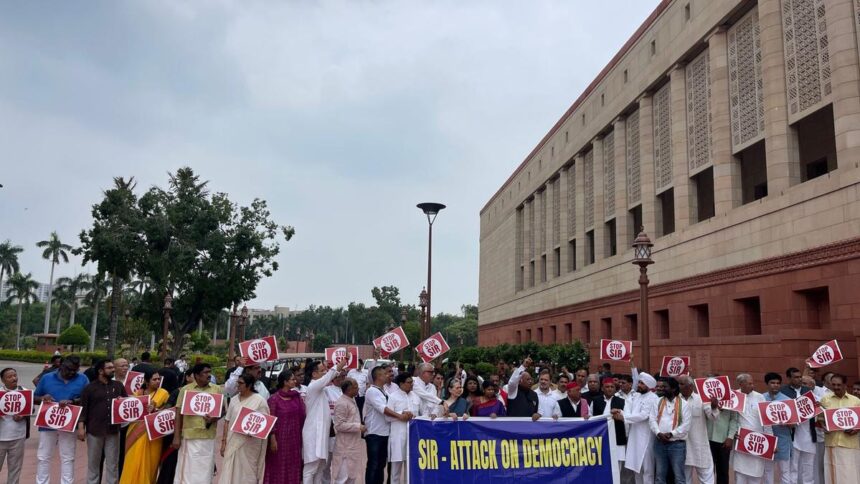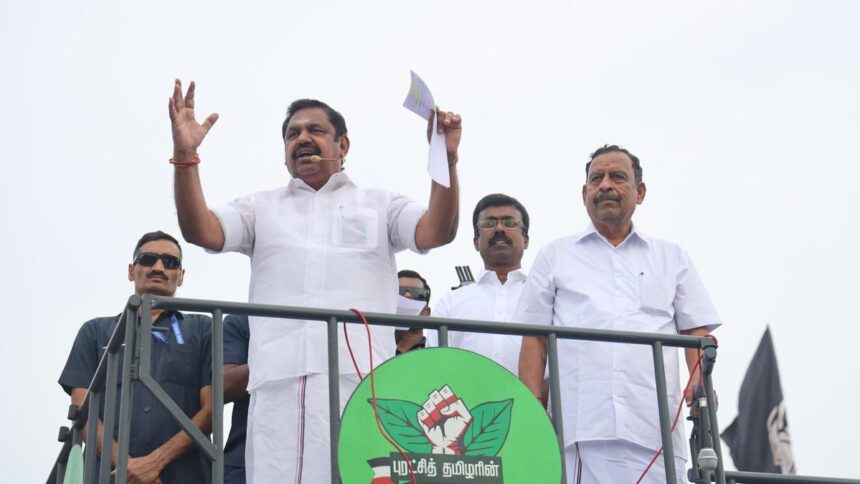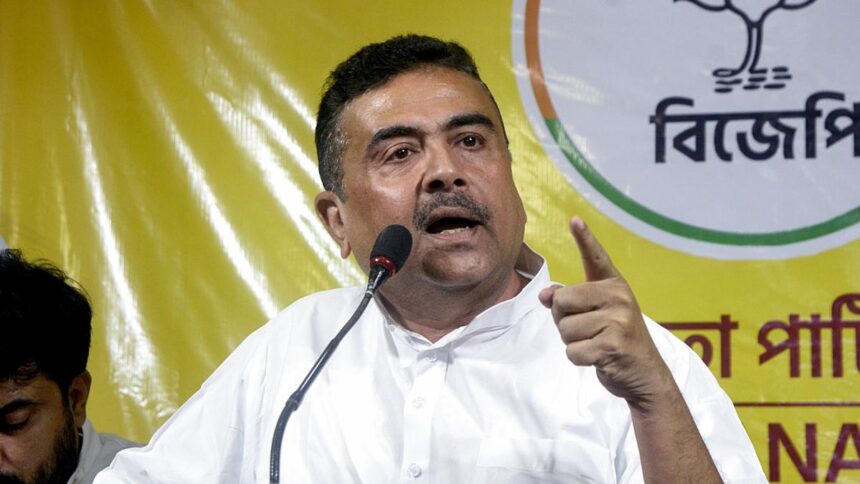Last week, a few dozen students of a Tribal Welfare Residential School for Girls in Parigi in Vikarabad in Telangana protested against the absence of math and chemistry faculty. In July, students of Left organisations agitated at the Secretariat in Hyderabad over poor education policies. Around the same time, the National Human Rights Commission (NHRC) directed the State government to investigate reports of over 800 children falling ill due to suspected food poisoning in Telangana’s residential schools.
The protests by students and the directions of the NHRC cannot be seen in isolation. For the second year in a row, the Congress government in Telangana has let the education sector down. While the average allocation for education across States is around 15% of their total budget, according to a State Budget Analysis, Telangana allocates significantly less. For the year 2025-26, for instance, it earmarked only 7.9%.
The Congress rode to power in 2023 promising a higher outlay for education. Several education activists and NGOs helped the party during its campaign. On January 24, before the Budget was presented, activists demanded that the Congress raise the budgetary outlay for the sector, but this did not happen.
The education sector has been underfunded over the past decade in the State. At the time of Telangana’s formation, the education budget of united Andhra Pradesh was 13.35% of budget estimates in 2013-14. After the formation of Telangana, this dropped to 10.89% in 2014-15 and further to 7.3% in 2022-23.
The number of personnel in the sector has also dropped. Telangana had 1,56,957 employees in the education sector at the time of its formation. By the time the Bharat Rashtra Samithi handed over the reins to the Congress, the number had declined to 1,51,801. In 2024-25, the number has gone up to 1,53,421, but this is still insufficient. The School Education Department had 1,37,252 employees in 2014-15; this dropped to 1,31,872 in 2022-23. How a reduction of 5,380 personnel has impacted the school education sector is anyone’s guess. It is also pertinent to note that the government’s reduced priority towards the sector comes at a time when schools have been struggling to get back on their feet after the pandemic.
A recent report shows how the system has been hollowed out due to the absence of regular teachers in rural and peri-urban areas, where the Congress performed well. Enrolment in government schools dropped from 70.1% in 2022 to 59.8% in 2024, according to the 2024 Annual Status of Education Report, published in January this year. If the State had invested sufficient funds in the sector, students would have continued to go to government schools. The same report found that only 6.8% of students in Class 3 can read text prescribed for Class 2 students. This is a drop from 12.8% in 2018.
The government is not unaware of the needs of the education system. The Telangana Education Commission, set up in September 2024 under former IAS officer Akunukri Murali, had submitted a report on the state of education and the requirements to raise standards. It had called for an outlay of ₹5,000 crore for improving facilities in 100 mandals out of the 632 mandals in Telangana. The report had stated that a phase-wise outlay over six years would cover all the schools at a total cost of ₹31,600 crore. However, its suggestions remain on paper.
The earlier regime had focused on the marquee model of residential education where a few students are provided good quality education, food, and boarding. There are 3,170 residential schools catering to girls, minorities, Other Backward Classes, Scheduled Castes, and Scheduled Tribe students. The Congress government appears to be following a similar model by developing Young India Integrated Residential Schools. These schools will be able to cater only to a few as a vast majority of students in Telangana are day scholars whose parents prefer educational facilities in the neighbourhood. Unless there is more investment in government schools in every neighbourhood, the goal of universal primary education will be a mirage in Telangana.
In 1795, Surendranath Banerjee, one of the founding members of the Indian National Congress, spoke of how only 7.5% was spent by the British on education. He said this needed to change. More than 130 years later, spending a similar share on education does a great disservice to the young people of Telangana.
Published – August 12, 2025 01:29 am IST
















